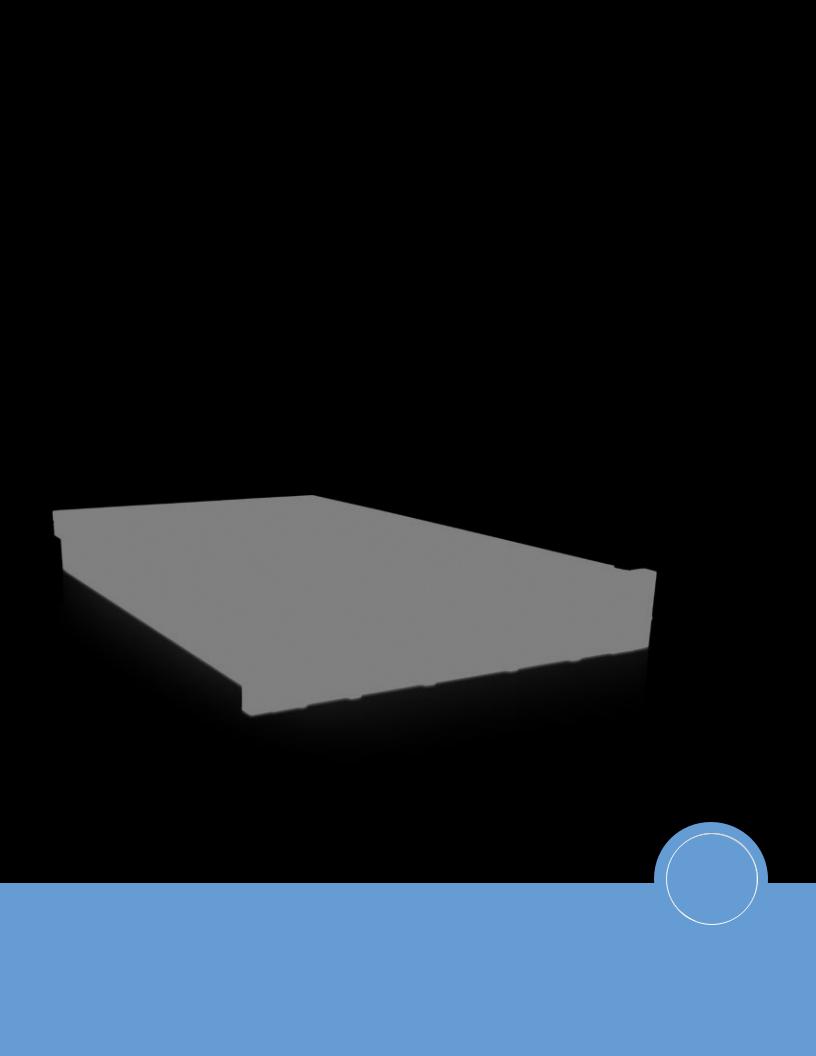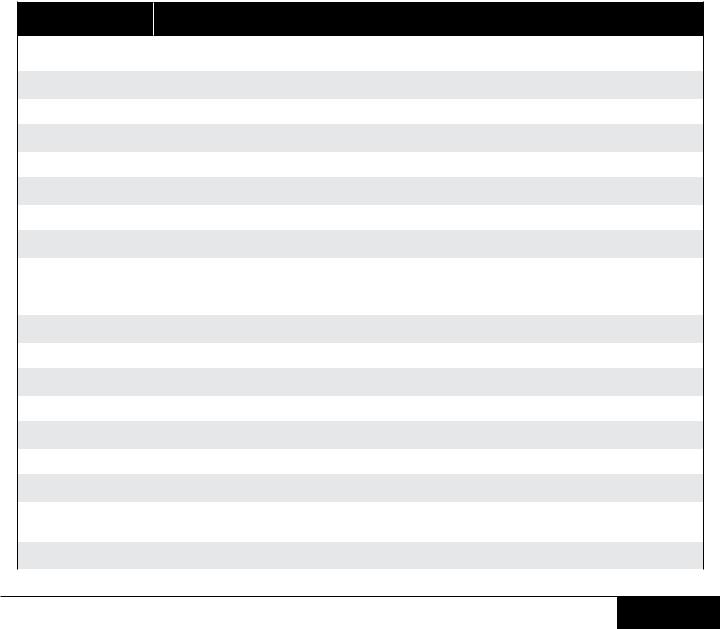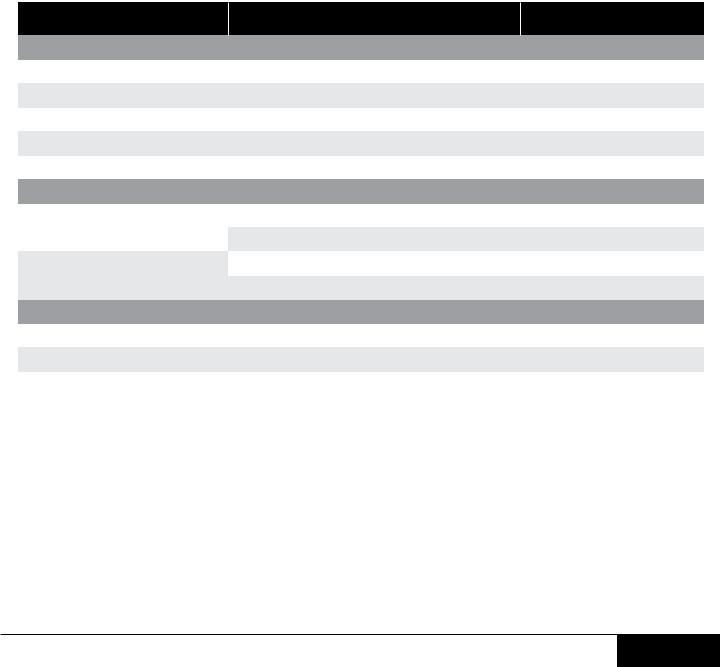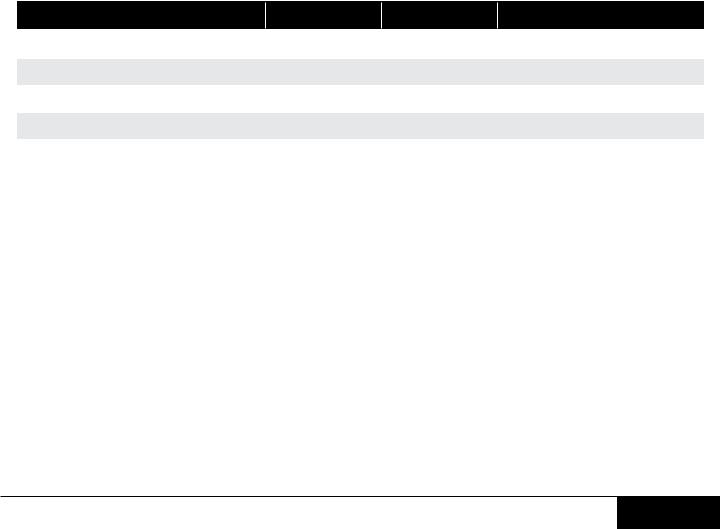Dell R710 User Manual

Dell™ POWEREDGE™ R710
technical guidebook
Inside the poweredge R710
Dell™ PowerEdge™ R710 Technical Guidebook
TABLE OF CONTENTS
Section 1. system overview |
6 |
A. Overview / Description |
6 |
|
|
B. Product Features Summary |
6 |
|
|
Section 2. Mechanical |
7 |
A. Chassis Description |
7 |
|
|
B. Dimensions and Weight |
8 |
|
|
C. Front Panel View and Features |
8 |
|
|
D. Back Panel View and Features |
8 |
|
|
E. Power Supply Indicators |
9 |
|
|
F. NIC Indicators |
9 |
|
|
G. Side Views and Features |
9 |
|
|
H. Rails and Cable Management |
10 |
|
|
I. Fans |
10 |
|
|
J. Control Panel / LCD |
11 |
|
|
K. Security |
11 |
|
|
I. Cover Latch |
11 |
|
|
II. Bezel |
12 |
|
|
III. Hard Drive |
12 |
|
|
IV. TPM |
12 |
|
|
V. Power Off Security |
12 |
|
|
VI. Intrusion Alert |
12 |
|
|
VII. Secure Mode |
12 |
|
|
L. USB Key |
12 |
|
|
M. Battery |
12 |
|
|
N. Field Replaceable Units (FRU) |
12 |
|
|
Section 3. Electrical |
13 |
A. Volatility |
13 |
|
|
B. ePPID (Electronic Piece Part Identification) |
13 |
|
|
Section 4. Power, Thermal, Acoustic |
14 |
A. Power Efficiencies |
14 |
|
|
B. Power Supplies |
14 |
|
|
I. Main Power Supply |
14 |
|
|
C. Power Supply Specifications |
15 |
|
|
D. Environmental Specifications |
16 |
|
|
E. Power Consumption Testing |
17 |
|
|
F. Maximum Input Amps |
17 |
|
|
G. Energy SMART Enablement |
17 |
|
|
H. Acoustics |
18 |
|
|
Dell™ PowerEdge™ R710 Technical Guidebook |
|
|
|
Section 5. Block Diagram |
19 |
|
Section 6. Processors |
21 |
|
A. Overview / Description |
21 |
|
|
|
|
B. Features |
21 |
|
|
|
|
C. Supported Processors |
21 |
|
|
|
|
D. Processor Configurations |
22 |
|
|
|
|
Section 7. Memory |
23 |
|
A. Overview / Description |
23 |
|
|
|
|
B. DIMMs Supported |
23 |
|
|
|
|
C. Speed |
24 |
|
|
|
|
D. Slots / Risers |
27 |
|
|
|
|
E. Supported Configurations |
27 |
|
|
|
|
F. Mirroring |
28 |
|
|
|
|
G. Advanced ECC (Lockstep) Modes |
28 |
|
|
|
|
H. Optimizer (Independent Channel) Mode |
28 |
|
|
|
|
Section 8. Chipset |
29 |
|
A. Overview / Description |
29 |
|
|
|
|
Section 9. BIOS |
31 |
|
A. Overview / Description |
31 |
|
|
|
|
B. Supported ACPI States |
31 |
|
|
|
|
C. I2C (Inter-Integrated Circuit) |
32 |
|
Section 10. Embedded NICs / LAN on Motherboard (LOM) |
32 |
|
A. Overview / Description |
32 |
|
|
|
|
Section 11. I/O Slots |
33 |
|
A. Overview / Description |
33 |
|
|
|
|
B. PCI Express Risers |
35 |
|
|
|
|
C. Additional Riser Restrictions |
35 |
|
|
|
|
D. X16 Express Card Specifications |
35 |
|
|
|
|
E. Boot Order |
35 |
|
|
|
|
Section 12. Storage |
36 |
|
A. Overview / Description |
36 |
|
|
|
|
B. Drives |
36 |
|
|
|
|
I. Internal Hard Disk drives |
36 |
|
|
|
|
II. Hard Disk Drive Carriers |
37 |
|
|
|
|
III. Empty Drive Bays |
37 |
|
|
|
|
IV. Diskless Configuration Support |
38 |
|
|
|
|
V. Hard Drive LED Indicators |
38 |
|
|
|
|
C. RAID Configurations |
38 |
|
|
|
Dell™ PowerEdge™ R710 Technical Guidebook
D. Storage Controllers |
39 |
|
|
I. SAS 6/iR |
39 |
|
|
II. PERC 6i |
40 |
|
|
E. LED Indicators |
41 |
|
|
F. Optical Drives |
41 |
|
|
G. Tape Drives |
41 |
|
|
Section 13. Video |
42 |
A. Overview / Description |
42 |
|
|
Section 14. Audio |
43 |
A. Overview / Description |
43 |
|
|
Section 15. Rack Information |
43 |
A. Overview / Description |
43 |
|
|
B. Cable Management Arm (CMA) |
43 |
|
|
C. Rails |
44 |
|
|
Section 16. Operating Systems |
45 |
A. Overview / Description |
45 |
|
|
Section 17. Virtualization |
47 |
A. Overview / Description |
47 |
|
|
Section 18. Systems Management |
47 |
A. Overview / Description |
47 |
|
|
B. Server Management |
47 |
|
|
C. Embedded Server Management |
48 |
|
|
I. Unmanaged Persistent Storage |
48 |
|
|
II. Lifecycle Controller/Unified Server Configurator |
48 |
|
|
III. iDRAC6 Express |
49 |
|
|
IV. iDRAC6 Enterprise |
49 |
|
|
Section 19. Peripherals |
52 |
A. USB peripherals |
52 |
|
|
B. External Storage |
52 |
|
|
Section 20. Documentation |
53 |
A. Overview, Description, and List |
53 |
|
|
Section 21. Packaging Options |
53 |
appendix |
54 |

Dell™ PowerEdge™ R710 Technical Guidebook
The Dell™ PowerEdge™ R710
The Dell PowerEdge R710 is designed to be the cornerstone of today’s competitive enterprise. Engineered in response to input from IT professionals, it is the next-generation 2U rack server created to efficiently address a wide range of key business applications. The successor to the PowerEdge 2950 III, the R710 runs the Intel® Xeon® 5500 Series Processors and helps you lower the total cost of ownership with enhanced virtualization capabilities, improved energy efficiency, and innovative system management tools.
Strong IT Foundation
As an IT professional, you want a data center built to allow for organic growth and the ability to scale based on your company’s changing requirements. You need complete solutions that allow you to focus your time and money on managing and growing your business. Dell understands your needs and responds with an expanding portfolio of enterprise servers, storage technologies, and services with a single goal: to help you simplify IT.
Purposeful Design
The R710 takes advantage of Dell’s system commonality. Once your IT managers learn one system, they understand how to manage next-generation Dell servers. Logical component layout and power supply placement also provide a straightforward installation and redeployment experience. Featuring 18 DIMM slots and 4 integrated network connections, the R710 delivers the critical components to virtualization and database performance. The Intel Xeon Processor 5500 Series adapts to your software in real time, processing more tasks simultaneously. Using Intel® Turbo Boost Technology, the R710 can increase performance during peak usage periods. You can then help reduce operating costs and energy usage with Intel® Intelligent Power Technology, which proactively puts your server into lower power states when demand decreases. Increased memory slots also save money by enabling you to use smaller, less-expensive DIMMs to meet your computing needs.
Enhanced Virtualization
Featuring Intel Xeon-based architecture, embedded hypervisors, large memory capacity, and integrated I/O, the next-generation Dell PowerEdge R710 delivers better overall system performance and greater virtual machine-per-server capacity. With optional factory-integrated virtualization capabilities, you get tailored solutions – built with the latest technologies from Dell and our trusted partners – which allow you to streamline deployment and simplify virtual infrastructures. Choose your hypervisor from market leaders such as VMware®, Citrix®, and Microsoft®, and enable virtualization with a few mouse clicks.
Energy-Optimized Technologies
Using the latest Energy Smart technologies, the R710 reduces power consumption while increasing performance capacity versus the previous generation servers. Enhancements include efficient power supply units right-sized for system requirements, improved system-level design efficiency, policy-driven power and thermal management, and highly efficient standards-based Energy Smart components. Dell's advanced thermal control delivers optimal performance at minimal system and fan power consumption resulting in our quietest 2U servers to date. These enhancements maximize energy efficiency across our latest core data center servers without compromising enterprise performance.
Simplified Systems Management
Gain more control with the next-generation Dell OpenManage™ suite of management tools. These tools provide enhanced operations and standards-based commands designed to integrate with existing systems for effective control. Dell Management Console (DMC) helps simplify operations and creates stability by shrinking infrastructure management to one console. This console delivers a single view and a common data source into the entire infrastructure management. Built on Symantec® Management Platform, it has an easily extensible, modular foundation that can provide basic hardware management all the way up to more advanced functions, such as asset and security management. Dell Management Console reduces or eliminates manual processes, enabling you to save time and money for more
5

Dell™ PowerEdge™ R710 Technical Guidebook
strategic technology usage. Secure, efficient, and more user friendly than its predecessors, the Dell Unified Server Configurator (USC) delivers “Instant On” integrated manageability through a single access point. You get quick, persistent access to the tool because it is embedded and integrated into the system for increased flexibility and capabilities. The USC is a one-stop shop for deploying operating systems with built-in driver installations, firmware updates, hardware configuration, and issue diagnoses.
Section 1. System Overview
A. Overview / Description
The PowerEdge R710 will lead Dell's 11th Generation PowerEdge portfolio in key areas of differentiation, primarily:
•Virtualization
•Power, thermal, efficiency
•Systems management, and usability
B. Product Features Summary
Feature Details
|
|
Processor |
Nehalem EP |
|
|
Front Side Bus |
Intel® QuickPath Interconnect (QPI) @ maximum 6.GT/s |
# Procs |
2S |
|
|
# Cores |
4 cores |
|
|
L2/L3 Cache |
4MB and 8MB |
|
|
Chipset |
Tylersberg |
|
|
DIMMs/Speed |
18 RDIMM or UDIMM DDR3 (9 per processor) |
|
|
Min/Max RAM |
1GB – 144GB |
|
|
|
Internal hard drive bay and hot-plug backplane |
HD Bays |
Up to six 3.5" SAS or SATA drives without optional flex bay OR |
|
Up to eight 2.5" SAS or SATA drives with optional flex bay |
|
|
HD Types |
SAS, SATA, Near-line SAS, and SSD |
|
|
Ext Drive Bay(s) |
Optional flex-bay expansion to support a half-height TBU |
|
|
Int. HD Controller |
PERC 6i and SAS 6/iR |
|
|
Opt. HD Controller |
|
|
|
BIOS |
|
|
|
Video |
Based on the Matrox G200 w/iDRAC |
|
|
Availability |
|
|
|
Server |
|
Management |
|
|
|
I/O Slots |
Two x8 and two x4 PCIe Gen2 slots or One x16 PCIe slot and two x4 PCIe Gen2 |
|
|
6

Dell™ PowerEdge™ R710 Technical Guidebook
Feature |
Details |
|
|
|
|
|
|
|
RAID |
PERC 6i utilizing battery backed 256MB DDRII 667 |
|
|
|
|
NIC/LOM |
Broadcom 5809C (2 cards/4ports) |
|
|
|
|
USB |
Five (two front, two rear, one internal) |
|
|
|
|
Power Supplies |
Two hot-plug high-efficient 570W PSU OR |
|
Two hot-plug 870W PSUs (1+1) |
||
|
||
|
|
|
Front Control |
The system control panel is located on the front of the system chassis to provide |
|
Panel |
user access to buttons, display, and I/O interfaces |
|
|
|
|
System ID |
Front and rear (0x0235) |
|
|
|
|
|
Five hot-swappable |
|
Fans |
Additional fan integrated into each power supply |
|
|
Single processor configurations will only have four fans |
|
|
|
|
Chassis |
2u Rackmount |
|
|
|
Section 2. Mechanical
A. Chassis Description
PowerEdge R710 is a 2U rackmount chassis. The updated design includes a new LCD, bezel and hard-drive carriers. Additional changes include tool-less rack latches, a pull out tray for customer labels, and LOM0/iDRAC MAC address; labels; support persistent storage (internal USB and SD card slots and external SD card slots); updated power supplies and removal process.
From view 3.5" HDD Chassis (without bezel)
From view 2.5" HDD Chassis (without bezel)
7

Dell™ PowerEdge™ R710 Technical Guidebook |
|
B. Dimensions and Weight |
|
Height |
8.64cm (3.40") |
Width |
44.31cm (17.44") |
Depth |
68.07cm (26.80") |
Weight (maximum config) |
26.1kg (57.54lbs) |
. |
|
C. Front Panel View and Features
Front I/O panel access including USB and VGA interfaces. The following components are located on the front:
•Express service tag (Information tag). A slide-out panel for system identification labels
•Power on indicator, power button
•NMI indicator (Nonmaskable interrupt). A device sends an NMI to signal the processor about hardware errors. It is used to troubleshoot software and device driver errors when using certain operating systems
•(2) USB connectors. Connects USB devices to the system. The ports are USB 2.0 compliant
•Video connector
•LCD menu buttons. Allows you to navigate the control panel LCD menu
•LCD panel. Provides system ID, status information, and system error messages
•System identification button
•Optical drive (optional)
•Hard drives
•Flex bay
D. Back Panel View and Features
The following components are located on the rear panel of the R710 enclosure:
•(1) 15-pin VGA connector
•(1) 9-pin serial port connector
•(4) 10/100/1000 Ethernet RJ-45 connectors
•(1) Rear system ID button
•(1) Active ID Cable Management Arm external LED jack
•(2) USB ports
•(1) (Optional) iDRAC6 Enterprise RJ-45 connector
•(1) Optional) iDRAC6 Express SD module
8

Dell™ PowerEdge™ R710 Technical Guidebook
E. Power Supply Indicators
The PSUs on the PE R710 have one status bi-color LED: green for AC power present and amber for a fault.
|
led |
Power Supply status |
|
|||
|
|
|
|
|
|
|
|
|
|
|
|
|
|
|
|
|
|
AC power is not present |
|
|
|
|
|
|
|
|
|
|
|
|
|
AC power is present |
|
|
|
|
|
|
|
|
|
|
|
|
|
Fault of any kind is detected |
|
|
|
|
|
|
|
|
|
|
|
|
|
DC power is applied to the system |
|
|
|
|
|
|
|
|
|
|
|
|
|
PSU mismatch (when hot-added/swapped) |
|
|
|
|
|
|
|
||
|
|
|
|
|
|
|
|
|
|
|
|
Table: Power Supply Indicator |
|
F. NIC Indicators |
|
|
|
|||
|
|
|
|
|
|
|
indicator |
|
indicator code |
||||
|
|
|
|
|
|
|
|
|
|
|
|
|
|
Link and activity indicators are off |
The NIC is not connected to the network |
|||||
|
|
|
|
|
|
|
Link indicator is green |
|
The NIC is connected to a valid network link at 1000 Mbps |
||||
|
|
|
|
|
|
|
Link indicator is amber |
|
The NIC is connected to a valid network link at 1000 Mbps |
||||
|
|
|
|
|
|
|
Activity indicator is green blinking |
Network data is being sent or received |
|||||
|
|
|
|
|
|
|
G. Side Views and Features |
|
|
|
|||
9

Dell™ PowerEdge™ R710 Technical Guidebook
H. Rails and Cable Management
Rack installation components such as rails are provided with the PowerEdge R710 Rack Kit. The rack installation components are as follows: Sliding rack mount with latest generation Cable Management Arm (CMA). When the system is installed in a rack, please observe the following guideline:
When the system is installed in a rack, only Dell-approved CMAs should be installed behind the chassis.
Rails
•Enable the replacement of thumbscrews with slam latches on the chassis for easier stowing in the rack.
•Include the new simple and intuitive ReadyRail™ tool-less rack interface for square-hole and round-hole racks.
•Provide significantly improved compatibility with non-Dell racks.
•Static rails for the R610 & R710 fit in all types of four-post and two-post racks available in the industry including four-post threaded hole racks.
CMAs
•Provide much larger vent pattern for improved airflow through the CMA.
•Include a common support tray for eliminating CMA sag.
•Replaced tie wraps with hook and loop straps to eliminate risk of cable damage during cycling.
•Maintain key feature of being fully reversible with no conversion required.
I. Fans
Fans
Five hot-swappable fans are mounted in a fan gantry that is located in the chassis between the hard drive bay and the processors. Each fan has a blind mate 2x2 connector that plugs directly into the planar. There is an additional fan integrated in each power supply to cool the power supply subsystem and also provide additional cooling for the whole system. Single processor configurations will have four fans populated.
The Embedded Server Management logic in the system monitors the speed of the fans. A fan failure or over-temperature in the system results in a notification by iDRAC6. All system fans are pulse-width modulated fans. Redundant cooling is supported with one fan failing at a time.
10

Dell™ PowerEdge™ R710 Technical Guidebook
J. Control Panel / LCD
The control panel board is connected to the planar via a 60-wire ribbon cable and a separate 5-wire cable for USB signals only. The LCD plugs into the control panel through a 20-pin ZIF connector and flex cable.
The system control panel is located on the front of the system chassis to provide user access to switches, display, and I/O interfaces. Features of the system control panel are:
•ACPI-compliant power button with an integrated green power LED (controlled by ESM)
•128x20 pixel LCD with controls
•Two navigation buttons
•One-select button
•One system ID button
•Non-Maskable-Interrupt (NMI) button (recessed)
•Ambient temperature sensor
•Two external USB 2.0 connectors (with two internal connectors dedicated for UIPS)
•15-pin VGA connector
The LCD panel is a graphics display controlled by the BMC/ESM. Both ESM and BIOS can send error codes and messages to the display.
The system’s LCD panel provides system information and status messages to signify when the system is operating correctly or when the system needs attention.
The LCD backlight lights blue during normal operating conditions and lights amber to indicate an error condition. When the system is in standby mode, the LCD backlight is off and can be turned on by pressing the Select button on the LCD panel. The LCD backlight will remain off if the “No Message" option is selected through the iDRAC6, the LCD panel, or other tools.
BIOS has the ability to enter a “Secure Mode" through Setup, which locks the power and NMI buttons. When in this mode, pressing either button has no effect but does not mask other sources of NMI and power control.
K. Security
I. Cover Latch
A tooled entry latch is provided on the top of the unit to secure the top cover to the chassis
11

Dell™ PowerEdge™ R710 Technical Guidebook
II. Bezel
A metal bezel is mounted to the chassis front to provide the Dell ID. A lock on the bezel is used to protect un-authorized access to system peripherals and the control panel. System status via the LCD is viewable even when the bezel is installed.
III. Hard Drive
The optional front bezel of the system contains a lock. A locked bezel secures the system hard drives.
IV. TPM
The TPM is used to generate/store keys, protect/authenticate passwords, and create/store digital certificates. TPM can also be used to enable the BitLocker™ hard drive encryption feature in Windows Server® 2008. TPM is enabled through a BIOS option and uses HMAC-SHA1-160 for binding. There will be different planar PWA part numbers to accommodate the different TPM solutions. The “Rest of World" (ROW) version will have the TPM soldered onto the planar. The other version of the planar (post RTS and primarily for use by China) will have a connector for a plug-in module.
V. Power Off Security
The control panel is designed such that the power switch cannot be accidentally activated. The lock on the bezel secures the switch behind the bezel. In addition, there is a setting in the CMOS setup that disables the power button function.
VI. Intrusion Alert
A switch mounted on the left riser board is used to detect chassis intrusion. When the cover is opened, the switch circuit closes to indicate intrusion to ESM. When enabled, the software can provide notification to the customer that the cover has been opened.
VII. Secure Mode
BIOS has the ability to enter a secure boot mode via Setup. This mode includes the option to lock out the power and NMI switches on the Control Panel or set up a system password. See the 11th generation of PowerEdge servers BIOS Specification for details
L. USB Key
The port on the control panel is for an optional USB key and is located inside the chassis. Some of the possible applications of the USB key are:
•User custom boot and pre-boot OS for ease of deployment or diskless environments
•USB license keys for software applications like eToken™ or Sentinel Hardware Keys
•Storage of custom logs or scratch pad for portable user defined information (not hot-swappable)
M. Battery
A replaceable coin cell CR2032 3V battery is mounted on the planar to provide backup power for the
Real-Time Clock and CMOS RAM on the ICH9 chip.
N. Field Replaceable Units (FRU)
The planar contains a serial EEPROM to contain FRU information including Dell part number, part revision level, and serial number. The Advanced Management Enablement Adapter (AMEA) also contains a FRU EEPROM. The backplane’s SEP and the power supplies’ microcontroller are also used to store FRU data.
12

Dell™ PowerEdge™ R710 Technical Guidebook
Section 3. Electrical
A. Volatility
See Appendix A of this Technical Guidebook
B. ePPID (Electronic Piece Part Identification)
ePPID is an electronic repository for information from the PPID label that is stored in non-volatile RAM. The BIOS reports the ePPID information using SMBIOS data structures. ePPID includes the following information:
•Dell part number
•Part revision level
•Country of origin
•Supplier ID code
•Date code (date of manufacture)
•Unique sequence number
COMPOnent |
description |
storage |
|
location |
|||
|
|
||
BOARDS |
|
|
|
Planar |
PWA,PLN,SV,DELL,R710 |
iDRAC FRU |
|
|
|
|
|
2.5" x 8' Backplane |
PWA,BKPLN,SV,R710,2.5SASX8 |
SEP |
|
|
|
|
|
3.5" x 6' Backplane |
PWA,BKPLN,SV,R710,3.5SASX6 |
SEP |
|
|
|
|
|
3.5" x 4' Backplane |
PWA,BKPLN,SV,R710,3.5SASX4 |
SEP |
|
|
|
|
|
iDRAC Enterprise |
PWA,RSR, SV, DELL,AMEA |
FRU |
|
|
|
|
|
Power supplies |
|
|
|
|
|
|
|
870W PowerEdge™ PSU |
PWR SPLY,885W,RDNT,ASTEC |
PSU Microcontroller |
|
|
|
||
PWR SPLY,885W,RDNT,DELTA |
PSU Microcontroller |
||
|
|||
|
|
|
|
570W Energy Smart PSU |
PWR SPLY,598W,RDNT,ASTEC |
PSU Microcontroller |
|
|
|
||
PWR SPLY,598W,RDNT,COLDWATT |
PSU Microcontroller |
||
|
|||
|
|
|
|
storage cards |
|
|
|
|
|
|
|
PERC 6/i Integrated |
ASSY,CRD,PERC6I-INT,SAS,NOSLED |
FRU |
|
|
|
|
|
PERC 6/E External |
PWA,CTL,PCIE,SAS,PERC6/E,ADPT |
FRU |
|
|
|
|
|
SAS 6/iR Integrated |
PWA,CTL,SAS,SAS6/IR,INTG |
FRU |
|
|
|
|
Table: ePPID Support list
Note: The fans do not have any integrated NVRAM. The PPID tables are currently scanned into a database by the system integrator.
13

Dell™ PowerEdge™ R710 Technical Guidebook
Section 4. Power, Thermal, Acoustic
A. Power Efficiencies
One of the main features of the 11th generation of PowerEdge servers is enhanced power efficiency. PowerEdge R710 achieves higher power efficiency by implementing the following features:
•User-selectable power cap (subsystems will throttle to maintain the specified power cap)
•Improved power budgeting
•Accurate inlet temperature
•PSU / VR efficiency improvements
•Switching regulators instead of linear regulators
•Closed loop thermal throttling
•Increased rear venting / 3D venting
•PWM fans with an increased number of fan zones and configuration-dependent fan speeds
•Use of DDR3 memory (lower voltage compared to DDR2, UDIMM support)
•CPU VR dynamic phase shedding
•Memory VR static phase shedding
•Random time interval for system start
•Allows an entire rack to power on without exceeding the available power
•BIOS Power/Performance options page
•Active Power Controller (BIOS-based CPU P-state manager)
•Ability to power down or throttle memory
•Ability to disable a CPU core
•Ability to turn off LOMs or PCIe lanes when not being used
•Option to run PCIe at Gen1 speeds instead of Gen2
B. Power Supplies
I. Main Power Supply
The base redundant system consists of two hot-plug 570W Energy Smart (energy efficient) power supplies in a 1+1 configuration. An 870W high-output power supply is also available. The power supplies connect directly to the planar.
There is a power cable to connect between the planar and the backplane. PowerEdge R710 power supplies have embedded cooling fans.
Starting with the 11th generation of PowerEdge servers (R710, R610, T610, M610, and M710), the power supplies no longer have a FRU EEPROM. FRU data is now stored in the memory of the PSU Microcontroller. Additionally, the PSU Firmware can now be updated by the BMC over the PMBus. Power is “soft-switched,” allowing power cycling via a switch on the front of the system enclosure, or via software control (through server management functions). In a single power supply configuration, the power supply is installed in the PS1 location and a blank module (metal cover) is installed in the PS2 location for factory consistency. Electrically, the system can operate with a single power supply in either bay.
14

Dell™ PowerEdge™ R710 Technical Guidebook
C. Power Supply Specifications
AC Power supply (per power supply)
|
|
|
Wattage |
870 Watt (High Output) |
|
570 Watt (Energy Smart) |
||
|
||
|
|
|
Voltage |
90-264 VAC, autoranging, 47-63Hz |
|
|
|
|
Heat Dissipation |
2968.6 BTU/hr maximum (High Output) |
|
1944.9 BTU/hr maximum (Energy Smart) |
||
|
||
|
|
|
|
Under typical line conditions and over the entire system ambient |
|
Maximum Inrush Current |
operating range, the inrush current may reach 55A per power supply |
|
|
for 10ms or less. |
|
|
|
15

Dell™ PowerEdge™ R710 Technical Guidebook
D. Environmental Specifications
temperature
|
|
|
|
10° to 35°C (50° to 95°F) with a maximum temperature gradation of |
|
Operating |
10°C per hour. Note: For altitudes above 2950 feet, the maximum |
|
|
operating temperature is derated 1°F/550 ft. |
|
|
|
|
Storage |
-40° to 65°C (-40° to 149°F) with a maximum temperature gradation of |
|
20°C per hour |
||
|
||
|
|
|
Relative humidity |
|
|
|
|
|
Operating |
20% to 80% (noncondensing) with a maximum humidity gradation of |
|
10% per hour |
||
|
||
|
|
|
Storage |
5% to 95% (noncondensing) with a maximum humidity gradation of |
|
10% per hour |
||
|
||
|
|
|
Maximum vibration |
|
|
|
|
|
Operating |
0.26 Grms at 5-350Hz in operational orientations |
|
|
|
|
Storage |
1.54 Grms at 10-250Hz in all orientations |
|
|
|
|
Maximum shock |
|
|
|
|
|
Operating |
Half sine shock in all operational orientations of 31G +/- 5% with a pulse |
|
duration of 2.6 ms +/-10% |
||
|
||
|
|
|
|
Half sine shock on all six sides of 71G +/- 5% with a pulse duration of |
|
Storage |
2 ms +/-10%: Square wave shock on all six sides of 27G with velocity |
|
|
change @ 235 in/sec or greater |
|
|
|
|
Altitude |
|
|
|
|
|
Operating |
-16 to 3048 m (-50 to 10,000 ft) Note: For altitudes above 2950 feet, the |
|
maximum operating temperature is derated 1°F/550 ft. |
||
|
||
|
|
|
Storage |
-16 to 10,600 m (-50 to 35,000 ft) |
|
|
|
16

Dell™ PowerEdge™ R710 Technical Guidebook
E. Power Consumption Testing
Feature |
Energy Smart PSU |
High Output PSU |
|
|
|
|
|
|
Dimensions |
L-206.4 mm1 x W-67.5 mm x H-76.5 mm |
|
Status Indicators |
1 x bi-color Light Emitting Diode |
|
|
|
|
Integrated Fans |
1 x 60 mm |
|
|
|
|
Fixed Input Plug |
IEC-C14 |
|
|
|
|
AC Cord Rating |
15 Amps @ 120 VAC, 10 Amps @ 240 VAC |
|
|
|
|
Input Voltage |
90 – 264 VAC |
|
|
|
|
Auto-ranging |
Yes |
|
|
|
|
Line Frequency |
47 – 63Hz |
|
|
|
|
Maximum Inrush Current |
55 Amps per supply for 10 ms or less |
|
|
|
|
Hot-Swap Capability |
Yes |
|
|
|
|
Output Power |
570W |
870W |
|
|
|
Maximum Heat Dissipation |
1944.9 BTU per hour |
2968.6 BTU per hour |
|
|
|
Efficiency (20% - 100% Load) |
86.9 – 90.5% @ 115 VAC |
85 – 88% @ 115 VAC |
|
88 – 92% @ 230 VAC |
87 – 90% @ 230 VAC |
|
|
|
1 Does not include the power supply handle or ejection tab
F. Maximum Input Amps
Max input current (High Output): 12A @ 90 VAC, 6A @ 180 VAC
Max input current (EnergySmart): 7.8A @ 90 VAC, 3.9A @ 180 VAC
G. Energy SMART Enablement
The 11th generation of PowerEdge servers implements aspects of Dell’s new Energy Smart strategy.
Major differences include:
•Discontinuing Energy Smart-branded servers with limited configurations and instead offering
Energy Smart components on a portfolio level, such as high capacity and Energy Smart power supplies
•Allowing customers to order either a lowest power footprint configuration or a best performance-per-watt configuration
•Offering Energy Smart selected components such as DIMMs or hard drives, but not “cherry picking" or screening individual manufacturers’ components based on energy consumption.
17

Dell™ PowerEdge™ R710 Technical Guidebook
H. Acoustics
The acoustical design of the PowerEdge R710 reflects the following:
•Adherence to Dell’s high sound quality standards. Sound quality is different from sound power level and sound pressure level in that it describes how humans respond to annoyances in sound, like whistles, hums, etc. One of the sound quality metrics in the Dell specification is prominence ratio of a tone, and this is listed in the table below.
•Office environment acoustics. Compare the values for LpA in the table below and note that they are lower than ambient noise levels of typical office environments.
•Hardware configurations affect system noise levels. Dell’s advanced thermal control provides for optimized cooling with varying hardware configurations. Most typical configurations will perform as listed in the table below. However some less typical configurations and components
can result in higher noise levels. For example, a system configured with a PERC6/E card will be approximately twice as loud (~9 dBA higher) in 23+/-2° C ambient.
•Noise ramp and descent at Bootup. Fan speeds hence noise levels ramp during the boot process in order to add a layer of protection for component cooling in the case that the system were not to boot properly.
PowerEdge R710 (2.5" and 3.5" chassis) with RK385 fans (quantity below), 2x 870-W FU096 Power
Supplies, 2.40 GHz Quad-Core E5530 CPUs (quantity below), 7x 2-GB DIMMs, 1x DVD Drive, Perc 6i card, and 4x Hard Disk Drives (type below)
Acoustical dependence on quantities of fans, CPUs, and Hard Disk Drive type is not strong. The values below represent therefore the performance for redundant (5x fans and 2x CPUs) as well as the nonredundant (4x fans and 1x CPU) configurations. They also represent performance for 2.5" 10k SAS
XK112 as well as 3.5" 7.2k SATA NW340 Hard Disk Drives.
Condition in 23 + 2° C ambient |
LwA-UL, bels |
LpA, dBA |
Tones |
|
|
|
|
|
|
|
|
Standby |
3.1 |
18 |
No prominent tones |
|
|
|
|
Idle |
5.5 |
39 |
No prominent tones |
|
|
|
|
Active Hard Disk Drives |
5.5 |
39 |
No prominent tones |
|
|
|
|
Stressed Processor |
5.5 |
39 |
No prominent tones |
|
|
|
|
Definitions
Standby: AC Power is connected to Power Supply Units but system is not turned on.
Idle: Reference ISO7779 (1999) definition 3.1.7; system is running in its OS but no other specific activity. Active Hard Drives: An operating mode per ISO7779 (1999) definition 3.1.6; Section C.9 of ECMA-74
9th ed. (2005) is followed in exercising the hard disk drives.
Stressed Processor: An operating mode per ISO7779 (1999) definition 3.1.6; SPECPower set to 50% loading is used.
LwA-UL: The upper limit sound power level (LwA) calculated per section 4.4.2 of ISO 9296 (1988) and measured in accordance with ISO7779 (1999).
LpA: The average bystander position A-weighted sound pressure level calculated per section 4.3 of ISO9296 (1988) and measured in accordance with ISO7779 (1999). The system is placed in a rack with its bottom at 25-cm from the floor.
Tones: Criteria of D.5 and D.8 of ECMA-74 9th ed. (2005) are followed to determine if discrete tones are prominent. The system is placed in a rack with its bottom at 75-cm from the floor. The acoustic transducer is at front bystander position, ref ISO7779 (1999), Section 8.6.2.
18
